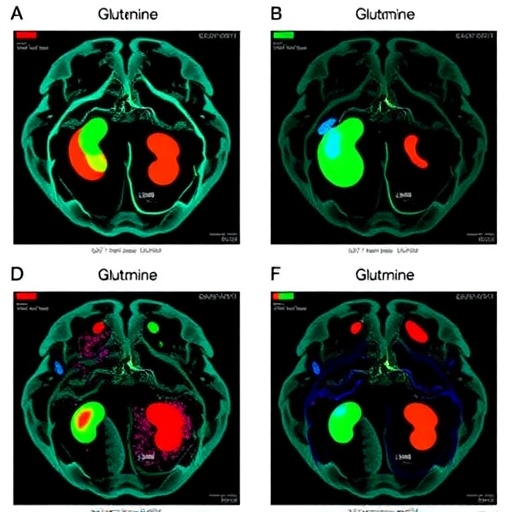
Researchers from Virginia Commonwealth University have made significant strides in investigating a novel therapeutic target for Lyme disease, a condition caused by the bacterium Borrelia burgdorferi, which is carried by ticks. As Lyme disease continues to pose a substantial public health threat, particularly in the United States and Europe, this new research sheds light on unique biochemical mechanisms utilized by the pathogen to survive and thrive. The focus of the study centers around an enzyme known as lactate dehydrogenase, specifically BbLDH, revealing its vital role in the pathogen’s metabolism and potential as a therapeutic target.
Lyme disease, often characterized by its telltale rash and a host of other systemic symptoms, challenges both patients and healthcare providers alike. The complexities of its treatment arise due to the bacterium’s adaptability and the sophisticated metabolic pathways it employs to regulate its internal environment. The research team identified that BbLDH allows Borrelia burgdorferi to convert pyruvate into lactate, ensuring a delicate balance of NADH and NAD+ within the bacterium. This balance is critical as it influences the redox state of the cells, ultimately affecting their viability and ability to infect.
Utilizing a multifaceted research approach, the scientists performed a blend of genetic, biochemical, and X-ray crystallography techniques to scrutinize the structural characteristics of BbLDH. Their inquiries led them to uncover not just the fundamental workings of this enzyme, but also its necessity for the in vitro growth of B. burgdorferi. This finding was coupled with noteworthy observations regarding the bacterium’s infectivity in live animal models, underscoring the importance of BbLDH in the pathogen’s life cycle.
The researchers demonstrated that BbLDH is not merely an accessory enzyme; rather, it is integral to the survival and dissemination of Lyme disease-causing bacteria. Through loss-of-function studies, where BbLDH was inhibited, the team observed drastic reductions in the growth and infectivity of the bacterium. Such results highlight the enzyme’s potential to be targeted in novel therapeutic strategies aimed at curbing Lyme disease and perhaps other tick-borne illnesses as well.
In their pursuit for new treatments, the scientists embarked on high-throughput screening methods that yielded several promising LDH inhibitors. These inhibitors could be pivotal in developing targeted therapies that are specific to Borrelia burgdorferi, ultimately aiming to mitigate the impact of Lyme disease on public health. The study not only offers hope for new medications but also paves the way for a deeper understanding of enzyme functions in other tick-borne pathogens, which often share similar survival tactics.
The biochemical features of BbLDH elucidated in this study underscore its uniqueness, presenting opportunities for the synthesis of genus-specific inhibitors. The authors expressed enthusiasm regarding the potential of these inhibitors to become effective treatment modalities for Lyme disease. Given the global rise in tick populations and the associated increase in vector-borne diseases, the need for innovative approaches to treatment is more urgent than ever.
Furthermore, this research contributes to a growing body of evidence that emphasizes the significance of metabolic pathways in infectious agents. As scientists continue to untangle the complexities of bacteria like Borrelia burgdorferi, they gain invaluable insights that may lead to breakthroughs in public health strategies. The findings implicate BbLDH not just as a target for Lyme disease but potentially as a model for understanding other pathogens and their metabolic adaptations as well.
Lyme disease’s prevalence and its burdens on healthcare systems reinforce the necessity for ongoing research in this field. Each discovery, like that of BbLDH, provides a layer of understanding that can inform the development of novel, more effective therapeutics. In a world that is continually changing due to environmental factors, which may increase tick exposure, the imperative to find new mechanisms of action against such pathogens becomes clear.
With the published results in mBio, a journal associated with the American Society for Microbiology, the study serves as a beacon of hope for advancements in Lyme disease treatment. The interdisciplinary approach taken by the researchers offers a template for future investigations into other tick-borne pathogens and their metabolic dependencies, reinforcing the adaptive nature of microbial life. As the research community rallies around these findings, the possibility for significant advancements in the fight against Lyme disease and other vector-borne illnesses becomes ever clearer.
In conclusion, the identification of BbLDH as a vital enzymatic target for developing therapeutics against Lyme disease represents a noteworthy advancement in microbiological research. This exploration sets a precedent for future studies aiming to combat not only Borrelia burgdorferi but also other pathogens that leverage similar metabolic pathways. The implications of this research extend beyond Lyme disease, opening gates for broader applications in infectious disease management and public health.
Research continues to evolve, and as scientists deepen their understanding of pathogenic mechanisms, the path toward innovative strategies and solutions becomes more defined. The journey into the metabolic intricacies of Borrelia burgdorferi is only just beginning, but the promise of new therapeutic avenues shines brightly on the horizon.
Subject of Research: BbLDH as a therapeutic target for Lyme disease
Article Title: Enzymatic Targeting in Lyme Disease: BbLDH as a Novel Therapeutic Avenue
News Publication Date: October 24, 2023
Web References: https://journals.asm.org/doi/10.1128/mbio.03728-24/
References: American Society for Microbiology Archives
Image Credits: No specific images referenced.
Keywords: Lyme disease, BbLDH, Borrelia burgdorferi, metabolic pathways, tick-borne diseases, enzyme inhibitors, public health, therapeutic targets, microbiology.
Tags: biochemical mechanisms Lyme pathogenBorrelia burgdorferi metabolismcomplexities of Lyme disease treatmentlactate dehydrogenase as therapeutic targetLyme disease researchmetabolic pathways in BorreliaNADH NAD+ balance in bacterianovel therapeutic strategies for Lyme diseasepublic health threat Lyme diseasetick-borne diseases researchunique enzyme functions in pathogensVirginia Commonwealth University study





